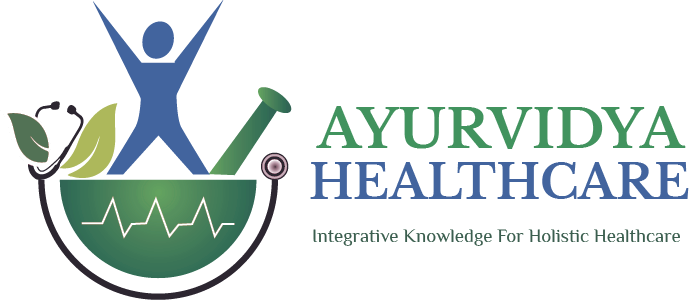18th October 2019
Presentation on Ayurvedic Ingredients for Healthier Foods by Dr Ashwinikumar Raut, Director – Clinical Research & Integrative Medicine, Medical Research Centre, Kasturba Health Society
Seminar on “Exploring Wholesome Ingredients for Holistic Health“ On Friday 18th October 2019 At Hotel Kohinoor Continental, Andheri (E), Mumbai. Organized by PFNDAI

Ayurvedic Ingredients for Healthier Foods By Dr Ashwinikumar Raut
नानौषधींभूतं जगति किंचितद्रव्यम् उपलभ्यते ।
तम् तम् युक्तम अर्थम् च तम् तम् अभीप्रेत्त्य ।। (चरक सुत्रस्थान : २६-१२)
The Sanskrit verse from Charaka-samhita depicts the profundity of Ayurvedic concept. It states that “There is no substance in the world which cannot serve as medicine/as a remedy through intelligent application”.
Hence the spectrum of Ayurvedic ingredients spans over simple water and a food substance to the complex mineral or metallic preparations. However through conventional perceptions Ayurvedic health foods would typically include Chyavanprash, Bilwavaleha, Shunthipaka, Gulkanda, Turmeric-latte, Amla candy etc. Ayurvedic ingredients as medicinal foods are generally accepted as safe and hence don’t require formal medical prescription. It is also believed that such a product has specific healthcare activity with wide therapeutic margin.
Application of Ayurvedic ingredients for healthier foods can be effectively achieved by comprehending the ‘Rasa-Guna-Karma’ matrix of these ingredients. The activity-efficacy index of Ayurvedic products would also be determined by host-specific-factors such as prakruti, dosha-samyata and dhatu-sarata. Hence sub-stratification of Ayurvedic health foods would be desirable for enhancing the benefits. Nevertheless, the uniqueness is that the same Ayurvedic substance can be used as a food substance or as a food-medicine or as a medicine-food or just as a medicine. Hence a product which is inspired from Ayurvedic sciences and which gains inputs from pharmaceutics may be differently identified as AyurceuticalsRef.
Several Ayurvedic ingredients such as Ashwagandha, Tulsi, Ginger, Turmeric etc are currently being explored in diverse foods/beverages such as teas, milks, digestive products, energy building products etc. however, the part of the plant used, the amount of the ingredient, compatibility of the concomitant food substances as well as the frequency and duration of use of the product would determine the desirable benefits.
FSSAI and AYUSH are the two important agencies who determine the fate of food products and Ayurvedic products respectively. It is desirable that these two prominent agencies join hands together with effective application of nutritional sciences and food technology. This should reinstate the renaissance spirit in medicinal foods to facilitate health empowerment.

1st & 2nd June 2019
Dr Ashwinikumar Raut delivered an invited talk on ‘Management of Osteoporosis with Ayurvedic Medicinal Plant’ in INDOMEDICON2019, 8th Antiaging Medicine And Research Conference,at Hotel Kohinoor Continental, Andheri (East), Mumbai 400059

Abstract:
Asthiasarata, Asthikshaya and Asthidushti are the clinical conditions described in Ayurveda which can be equated with osteopenia-osteoporosis. Asthiasarata may be ascribed to genetic predisposition and early stages of nutritional deficiencies; Asthikshaya is an advanced deficient state of unhealthy bone mass whereas Asthidushti is the pathological state of bone mass leading to osteoporosis. Clinical history and physical assessment primarily of nails, hairs and teeth changes and locomotor activity help identify above stated clinical conditions in Ayurveda. However, osteoporosis is considered as a silent disease with diagnosis based on an imaging modality. Holistic management approach in Ayurveda includes therapeutic procedures, medicinal products, dietary modulations and behavioural-physical activity modifications.
Conventionally accepted evidence-based-medicine approach adores external research evidence for prescribing any therapeutic intervention. In integrative mode on evidence-based-Ayurveda approach we adopt to reverse pharmacology philosophy for drug discovery-development1. The approach facilitates translation of experience-based traditional practices into evidence-based scientific practices.
Recently we concluded a clinical study of Shinshapa (Dalbergia sissoo) in post-menopausal osteoporosis2. The product of D.sissoo leaves extract was standardized for its phyto-constituents was earlier evaluated at CDRI for its in-vitro activity as well as in-vivo animal studies for safety and efficacy in models of osteoporosis. Our one year long clinical study demonstrated down-regulation of alkaline phosphatase, hsCRP, and TNF-alpha whereas the DEXA-scan has documented non-deterioration of bone mineral density. Baseline musculoskeletal symptoms have also shown significant improvement. The product is further evaluated for assessment of bone markers of formation and resorption and kinetics of phyto markers.
References:
- Ashwinikumar A. Raut, Mukund S. Chorghade and Ashok D.B.Vaidya, Reverse Pharmacology, Chapter 4, 89-126, in Innovative Approaches in Drug Discovery. DOI: http://dx.doi.org/10.1016/B978-0-12-801814-9.00004-0, © 2017 Elsevier Inc.
- Meeta, Raut AA, Agashe SV, Wajahat A, Sarada CV, Vaidya ADB, Vaidya RA. A clinical study of a standardized extract of leaves of Dalbergia sissoo (Roxb ex DC) in postmenopausal osteoporosis. J Mid-life Health 2019;10:37-42.

